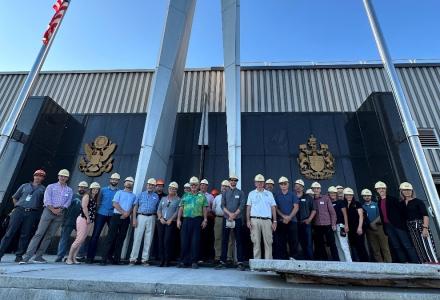

How can we feed the world, provide clean water and battle climate change? The answer could be right beneath our feet.
Healthy soil is the foundation of life on Earth. It’s a modern imperative for long-term agricultural production, which is growing as our global population continues to increase. Soil provides for an estimated 95 percent of food production and is essential for filtering pollutants from our water and reducing the impact of climate change by storing carbon dioxide emissions.
Though official measures are lacking, The Nature Conservancy estimates that less than 10 percent of soils in the United States and Canada are managed for optimal health today. With so many benefits derived from healthy soils, widespread adoption of soil health practices must become a priority.
With support from General Mills, a team of Conservancy scientists, environmental economists and agriculture experts recently prepared a Soil Health Roadmap, which outlines how adopting soil health practices on at least half of US corn, soy and wheat croplands by 2025 could deliver substantial social and environmental benefits. Soil health practices minimize soil disturbance and optimize plant diversity, contributing to more continuous plant and residue covers which in turn create vital, living ecosystems in the soil. Such practices include planting cover crops, adopting no-till or other forms of reduced tillage, and increasing diversity of crop rotations.

According to the team’s calculations, improving soil on more than half of US soy, wheat and corn croplands could deliver up to $7.4 billion in water and climate benefits annually. Furthermore, farmers stand to gain $37 million in net economic benefits due to increased productivity for each percent of cropland transformed across the US corn belt. In the most optimistic case—100 percent adoption of soil health management systems—Conservancy experts estimate up to $50 billion in annual societal economic benefits.
At the farm level, the benefits of improved soil health include higher rates of productivity and profitability over the long term. At the societal level, the benefits include improved water quality, filtration, and storage; richer biodiversity; and reduced greenhouse gas emissions. While calculations were solely focused on the US, experts say the estimates could likely be extrapolated across Canadian agriculture.
Conservation benefits from achieving our soil health adoption goal include mitigating 25 million metric tons of greenhouse gas emissions annually. That is the equivalent to taking 5 million passenger cars off the road for one year. Every year, we also can reduce the amount of nutrient loss by 344 million pounds, eliminate 116 million metric tons of soil erosion, and create more than 1 trillion gallons of available water capacity in cropland soils. All of these impacts will directly benefit our shared water resources, including reducing stressors to the Great Lakes, and improve the health of our waters that support nature and people.
While these estimated values are impressive, achieving these outcomes is a daunting job. It will require diverse stakeholders to come together to achieve a coordinated and elevated investment of time, funding, expertise and commitment across science, business and policy priorities. The success of the Soil Health Roadmap hinges on creating greater coordination, innovation and investment in soil health. By elevating the role of soil health in US cropland management systems and measuring the economic and environmental benefits, we can advance a scalable, sustainable model for farming systems around the world.

Our vision for good soil health is clear, and the benefits are compelling. Investing in healthier soils can create new sources of wealth for farmers across America’s Heartland while creating a dividend for consumers and future generations in the form of resilient food systems, clean water and a stable climate. This is a win-win: Improving soil health can boost agricultural productivity and reduce environmental impacts.
Within the Great Lakes basin, The Nature Conservancy and partners are already working to improve soil health through projects such as the Saginaw Bay Regional Conservation Partnership Program and the 4R Nutrient Stewardship Certification in the Western Lake Erie basin. The Conservancy also is working to increase climate mitigation opportunities in agriculture by collaborating with the Delta Institute to promote the Nitrogen Credit Program in Saginaw Bay, where growers that adopt nutrient management practices that reduce greenhouse gas emissions are potentially eligible for a greenhouse gas credit payment. These programs are already showing benefits, such as establishing more than 14,000 acres of cover crops in the Saginaw Bay watershed and verifying the sound nutrient and fertilizer recommendations on over 1.2 million-plus acres in the Western Lake Erie watershed.
For more information about how The Nature Conservancy and our partners are working to achieve soil health, visit nature.org/soil.





